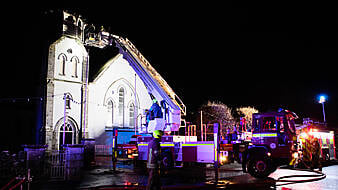Ireland could see up to 1,200 cases a day of Covid-19 after Christmas if public health measures are not followed, Professor Philip Nolan has warned.
The HSE is braced for a significant rise in the reproductive rate of the virus unless people keep discretionary meetings to a minimum after the country exited Level 5 restrictions this week.
Public health experts said the level of infection was “static” but with a persistently high incidence in older people.
Chief medical officer, Dr Tony Holohan, said the renewed lockdown would produce a low of around 250 cases a day.
As of 2pm today, 239 COVID-19 patients are hospitalised, of which 32 are in ICU. 10 additional hospitalisations in the past 24 hours.
Advertisement— Department of Health (@roinnslainte) December 3, 2020
“That underscores the importance of each one of us recognising what a potentially fragile situation we are in but that will not inevitably lead to some of the potential R number increases that we have modelled.”
He warned if large numbers over the next three weeks adopted “discretionary” socialising, such as going to restaurants, it could leave the health system in a “precarious” situation.
“If people can limit the extent that they have social engagements that are discretionary and avoid those, particularly in the weeks running into Christmas, we have a chance we can maintain some control in terms of transmission levels and we will not find ourselves as a country experiencing rapid growth of infection.”

He said he did not want to have to recommend further restrictions in future.
Prof Nolan said the reproductive rate of coronavirus was 0.8 to 1 at present.
He said: “The more contacts, the higher the R number will go, the higher the number of cases we will be seeing in January.”
Professor Nolan said small increases in the R number to 1.6 could produce between 800 and 1,200 cases a day.
Dr Holohan said: “It is not inevitable. It is still within our grasp as a country to take the kind of measures that can help protect against that reality.”
He said the modelling was not scaremongering and these were not predictions.
“These are plausible. We are not applying an R number of four to the numbers, we are applying very small differences.”







